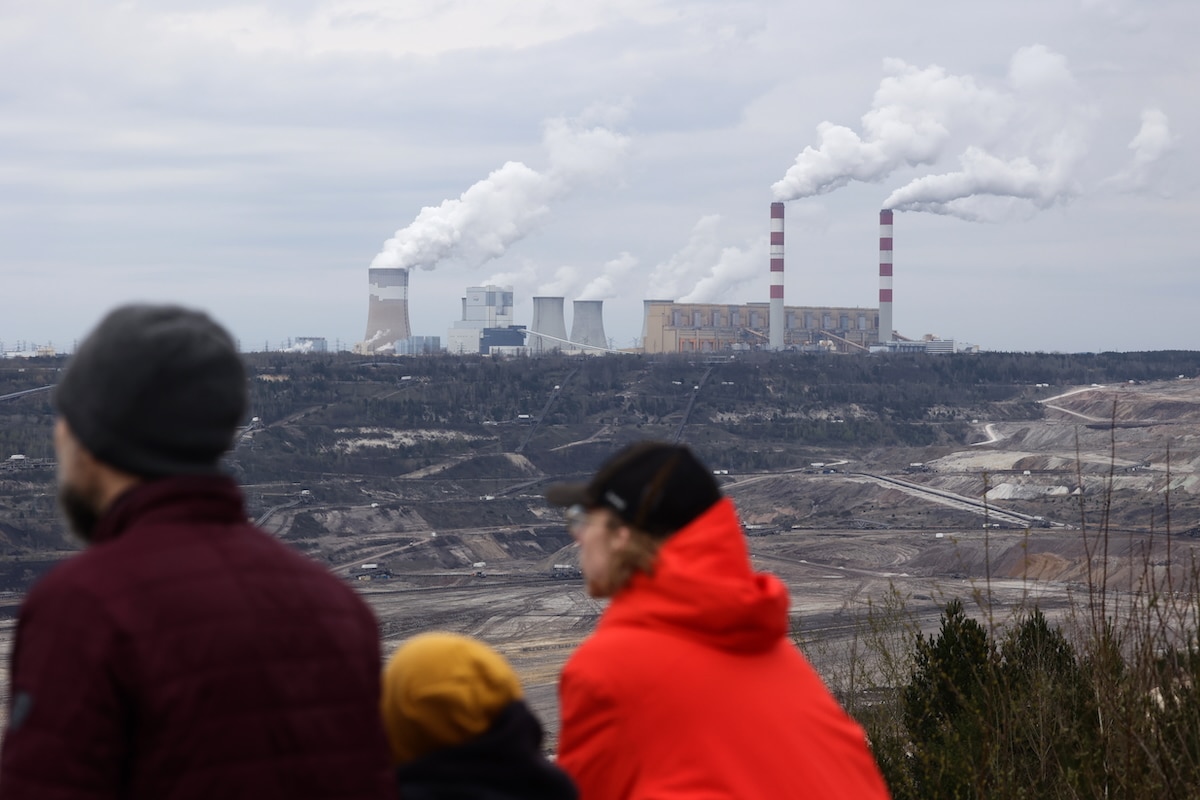The Belchatow Power Station and lignite Belchatow Coal Mine near Belchatow, Poland on April 9, 2025. Jakub Porzycki / NurPhoto

Why you can trust us
Founded in 2005 as an Ohio-based environmental newspaper, EcoWatch is a digital platform dedicated to publishing quality, science-based content on environmental issues, causes, and solutions.
Leading climate scientists are warning that the timeframe to limit global warming to 1.5 degrees Celsius is shrinking, and the world could have just three years left to prevent breaching this limit.
Experts warn the threshold could be passed within the next few years, with Piers Forster, director at the Priestley Centre for Climate Futures at University of Leeds, noting that “Things are all moving in the wrong direction” with global heating and sea level rise, as reported by BBC.
Forster lead a recent study with more than 60 leading climate scientists from around the world that determined countries have continued to “burn record amounts of coal, oil and gas and chop down carbon-rich forests,” which has left the 1.5 degree target of the Paris Agreement at risk.
“Things are all moving in the wrong direction.”
Director of the Priestley Centre for Climate Futures at the University Prof Piers Forster is a lead author of the study showing how deep into the climate crisis the world has fallen: www.theguardian.com/environment/…
— Leeds Alumni (@leedsalumni.bsky.social) June 19, 2025 at 10:58 AM
Previous research from 2020 determined there were only about 500 billion metric tons of carbon dioxide that the world could emit to maintain just a 50% possibility to prevent breaching the 1.5 degree target. As of early 2025, that amount was only 130 billion metric tons, the study authors found. Their findings were recently published in the journal Earth System Science Data.
If the current trajectory of emissions continues, the world has only about three years before the budget hits zero, although as Forster and Debbie Rosen, research and innovation development manager at the Priestley Centre, reported for Carbon Brief, the remaining budget is an estimate. Humanity could surpass the original 500 billion metric tons later than three years or even sooner.
Despite concerns, there has been no sign of a slow down on emissions, with greenhouse gas levels rebounding from their decline during the lockdowns of the COVID-19 pandemic.
“Most of these emissions were from fossil fuels and industry,” Forster and Rosen wrote for Carbon Brief. “There are signs that energy use and emissions are rising due to air conditioning use during summer heatwaves. Last year also saw high levels of emissions from tropical deforestation due to forest fires, partly related to dry conditions caused by El Niño.”
The study also found that sea level rise is rapidly increasing, and from 2019 to 2024, it increased by 26 millimeters, or more than double the long-term rate of sea level rise.
The 1.5 degree limit was agreed upon to limit the most drastic impacts of climate change. As the United Nations (UN) reported, every 0.1 degree Celsius of warming compared to pre-industrial average temperatures leads to noticeable increases in the intensity and frequency for temperature, precipitation, and drought. Extreme weather events including flooding, droughts, wildfires and heat waves are all more likely to become more frequent and intense if warming is more than 1.5 degrees Celsius.
Already, the world has surpassed 1.5 degrees Celsius of warming, as compared to pre-industrial levels, during the 2024 calendar year. However, overshooting this limit over a single year or even a few years doesn’t mean the limit has been breached. According to the UN World Meteorological Organization (WMO), the trend would need to repeat over a longer term before a determination that it has been breached would be conclusive.
In late 2024, scientists were already questioning whether the 1.5-degree target was still in reach, with Zeke Hausfather, climate research lead at Stripe and a research scientist at Berkeley Earth who also worked on the new study, saying that the target was “deader than a doornail” because humans have waited too long to take action to substantially curb emissions.
With such threats to the 1.5-degree target, immediate actions are necessary to limit warming. But even if the target is breached, humanity should still make efforts to minimize warming and its consequences.
“This is a critical decade: human-induced global warming rates are at their highest historical level, and 1.5 °C global warming might be expected to be reached or exceeded in around 5 years in the absence of cooling from major volcanic eruptions. Yet this is also the decade when global GHG emissions could be expected to peak and begin to substantially decline,” the authors wrote in the study.
“Depending on the societal choices made in this critical decade, a continued series of these annual updates could track an improving trend for some of the indicators herein discussed,” the study concluded.
By signing up, you agree to the Terms of Use and Privacy Policy, and to receive electronic communications from EcoWatch Media Group, which may include marketing promotions, advertisements and sponsored content.
